 | My Long Walk in France From the Mediterranean to the Atlantic in 2010 |
| France intro < Previous page Next page > | |
On y va (Let's go)
|
|
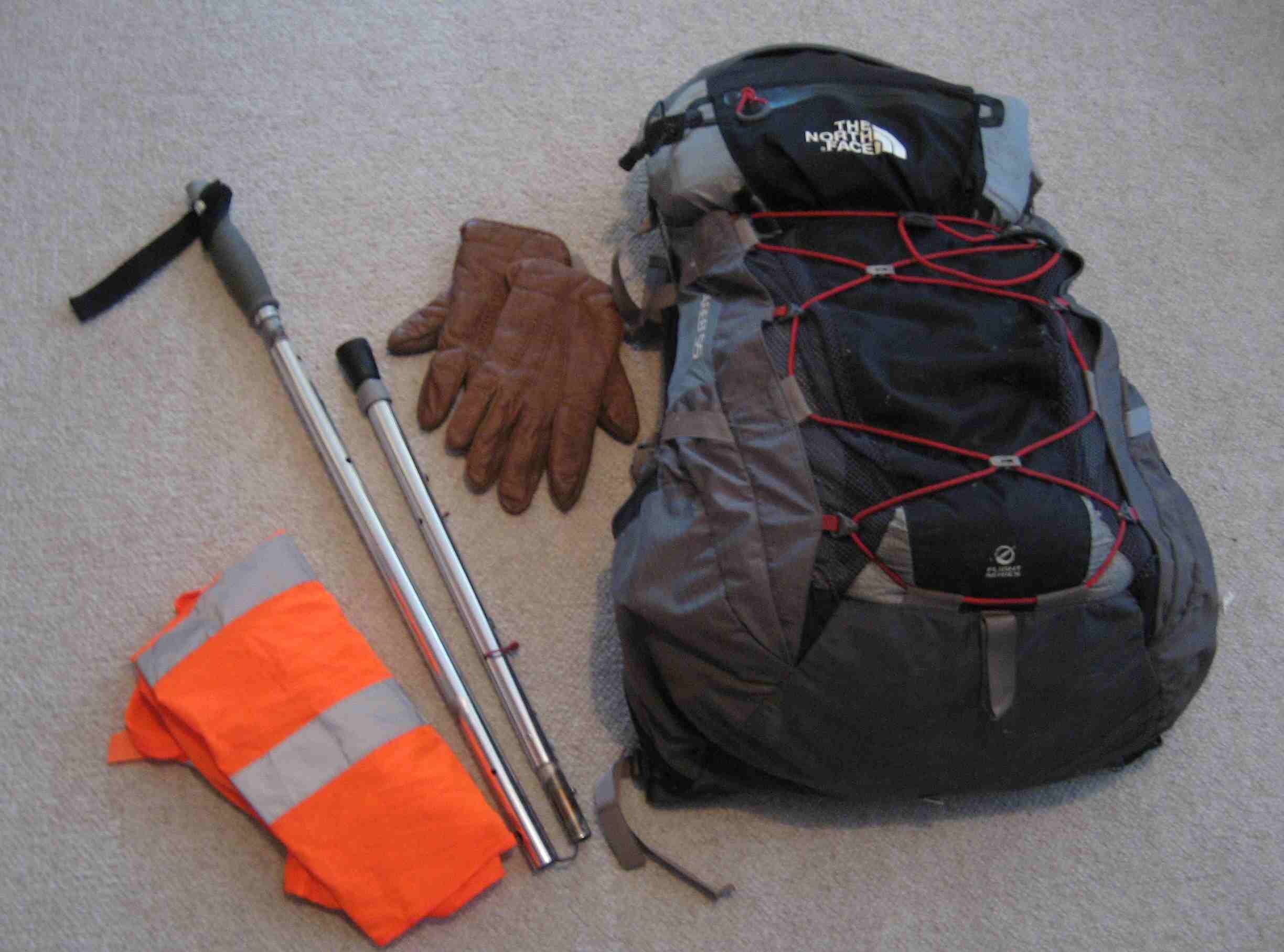 | |
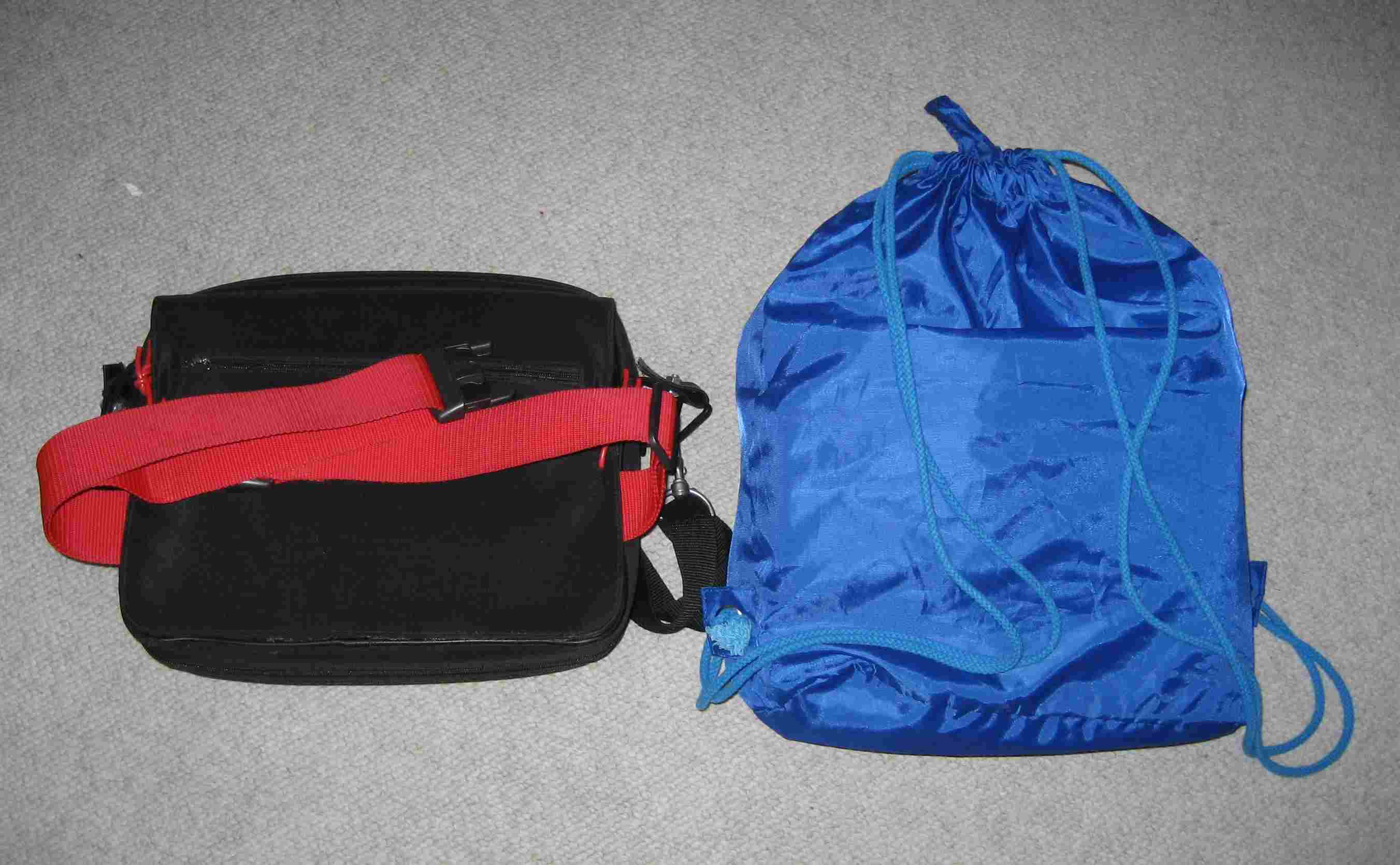 | |
 | |
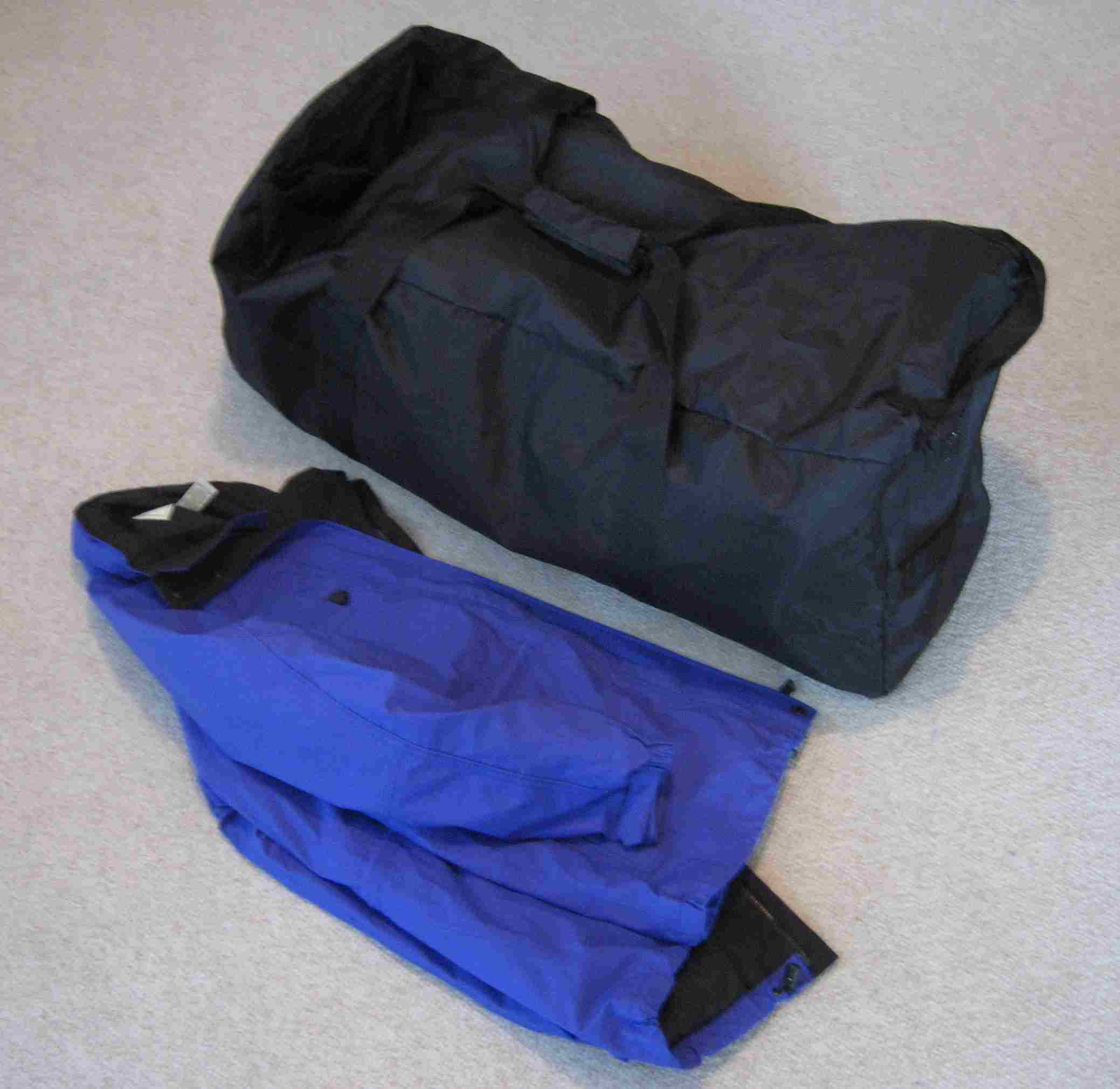 | Before-departure pictures .Top - Backpack, hiking pole, gloves and an orange cover for the pack. It's also a jacket . Above middle - Bellypack, and a drawstring daybag which goes in the backpack while I'm hiking. The bellypack contains camera, GPS, phone, passport and the like. The daybag carries secondary valuables such as medications and chargers . Above bottom - An example of nylon bags with distinct gear: blister treatments on the left and my "toolbox" on the right. I also have bags for toiletries, medications, chargers. . Left upper - Kitbag containing backpack ready for airline check-in, and my coat . Left lower - Old traveling clothes that I'll discard on arrival in France, so I can start hiking in clean clothes and without doing laundry the first night . The gear's total weight is 28 lb, not including water or food. |
 | |
Packing to go
Old equipment is like a trusted friend. Think "spouse". I have only one wife, and we've been together 42 years. So Jennifer helped me sort out my belongings as we bravely anticipated six weeks apart. I'm using the same North Face Skareb 55 backpack, and Asolo Gore-Tex mid-high hiking boots with which I finished my last hike. Both are well-worn, but I figure they'll last 400 miles. I'm not at all sure that my home-made hiking pole will go the distance, but I'm taking that also - with new rubber boots of course. A rubber boot lasts about five hundred miles, but you never know. My plan is to jab the pole into the ground more gently than before, and on this occasion keep my shoulder rotator-cuffs uninjured. New equipment is exciting, but unfamiliar and unproven. Think "mistress"? I have no mistresses, but I now have a Gore-Tex Eddie Bauer jacket that feels fine and looks, err, almost dapper. It's color is indigo. I did not seek out indigo, but that's the color of the only one in the thrift store. At $3.95, indigo will do just fine. The jacket had never been worn. I intended to be ruthless about the weight that I carry. That's a perennial good intention, but it's hard to omit the very items that you've been thankful to have in the past - such as an array of blister treatments. With experience, you know that you may need a soft insole at times, and a stiff insole at others, an ankle support and some anti-inflammatories, two wool hats rather than one, and one hiking pole and not two. In total, my clothing has gotten a bit lighter, but my electronics and other equipment have gotten much heavier. I'm carrying about 28 lb in all, not including food or water. That's actually 5 lb more than on the last hike. So much for good intentions, but I do sometimes manage to lighten-up enroute - when, finally, my shoulders cry "enough". At one point, I thought of using a jogging stroller to carry my gear. Their large wheels let them handle slightly rough terrain such as canal towpaths, and they're light enough to heave up steps and lift over fences. The stroller would have relieved my back and shoulders, but risked a whole new set of postural pains. Plus, as my friend Steve Burch pointed out, sending me a picture of a quincaillerie (hardware store), what exactly does one do with a hiking stroller when one enters a store? (Take all your belongings out, and chain the stroller to a nonexistent lamp post?) Besides, I've gotten used to my gnarled-and-rustic hiking appearance. The stroller would make me feel like a nanny - an honorable job for sure, but an unfamiliar self-image. For the airplane journey, the backpack goes into a protective (but disposable) kit bag, which stops its straps from being caught in baggage-handling machinery. I carry on to the airplane my bellypack with its electronics and my passport, and also a draw-string soft bag of miscellaneous valuables extracted from the backpack just for the flight. I fly in my hiking boots, taking them off as soon as I'm in my seat. I'd rather fly with something light and comfortable, but I can't risk arriving at the destination without my boots. Nothing comes easy
My electronic mapping fell apart a week before departure. For a few days, my stress level rose to new heights. The reason is tedious to explain, and just another example of the sheer randomness of some computer glitches. I'll explain anyway. But feel free to skip beyond the small-font section below. My maps are downloaded from the internet vendor to my desktop computer ("PC"), and later transferred to my mobile phone that has a GPS and other capability. In this guise, the phone is actually a PDA (for personal digital assistant). The initial download to the PC is of raw maps, to which I add a wealth of data in the form of routes and notes. Then I crop the maps to contain just the areas I need, so as to preserve the PDA from too much incoming. When that's been accomplished on the PC, I load the mapping program to the PDA's internal memory. I load the maps themselves to the PDA's memory card. That preserves the PDA's internal memory from overload. Besides, you can theoretically take the maps to another PDA just by transferring the memory card. The PDA actually has two memory cards, which conveniently lets me store photos on one and not mix them up with the maps on the other. When it all works properly, a fist-sized PDA is then all that I need to know where I am, where to go, and to keep notes, make phone calls, and store photographs. Some PDAs these days even take quality photographs themselves. Now here's where the random computer problem arose. And remember I said that the PDA has two memory cards. After some normally-eventful development, I put my PDA to bed just knowing it was working well. And I didn't conclude that lightly. I made sure I got some American maps so I could exercise it to the full. And I exercised it often. It was a great performer. But here comes the zinger. A week before departure, I removed the memory card that did not have the maps on, so as to load a few files of notes from my PC. When I put it back in the PDA, and started the mapping program, the PDA shut down. Repeatedly. The details are tedious.
Basically, the PDA assigned different drive letters (internally) to the
two memory cards, and copied the license number to the wrong one. The
maps wouldn't run with two licenses - a defense against people copying
the maps on to new SD cards and selling them. So I got smart, and
removed the offending memory card altogether. Smart, yes. But not smart
enough.
By now, the map memory card had been ruined by another layer of the license defense mechanism. It had written a "shut down" signal to the mapping memory card. After a few seconds of functionality, I experienced the black screen of death. Repeatedly. At that point, I had no hiking maps at all. So much for six months of careful planning. Diagnosing all this was a royal pain. More than once I told myself that good old paper maps never play this sort of trick. Who would have thought that just removing a memory card, and placing it back, could cause such grief? And that wasn't even the memory card that held the maps. Over the next day or so, I deep-sixed the offending memory card, migrated the license to a new memory card, and reloaded all the map and my routes to the new memory card on the PDA. I'm not going to risk using that second memory card slot - ever. Even thinking about it makes me wince. The functionality was restored. That's the same functionality as I told myself was bulletproof. Just a few days ago. Nothing can possibly go wrong again now. Right? Getting to the point
The start point of my hike was Agde on the Mediterranean. The nearest
decent-sized airport is Montpellier, fifty miles away. I booked from
Tampa to San Juan in Puerto Rico, to Madrid, and then on to Montpellier. The return
is from Bordeaux to Madrid and on to the U.S. This southerly routing
through Madrid avoids poor (winter) weather at places like Chicago and
Paris. When I wrote this, much of the country north of Florida was
experiencing "snowmageddon". | |
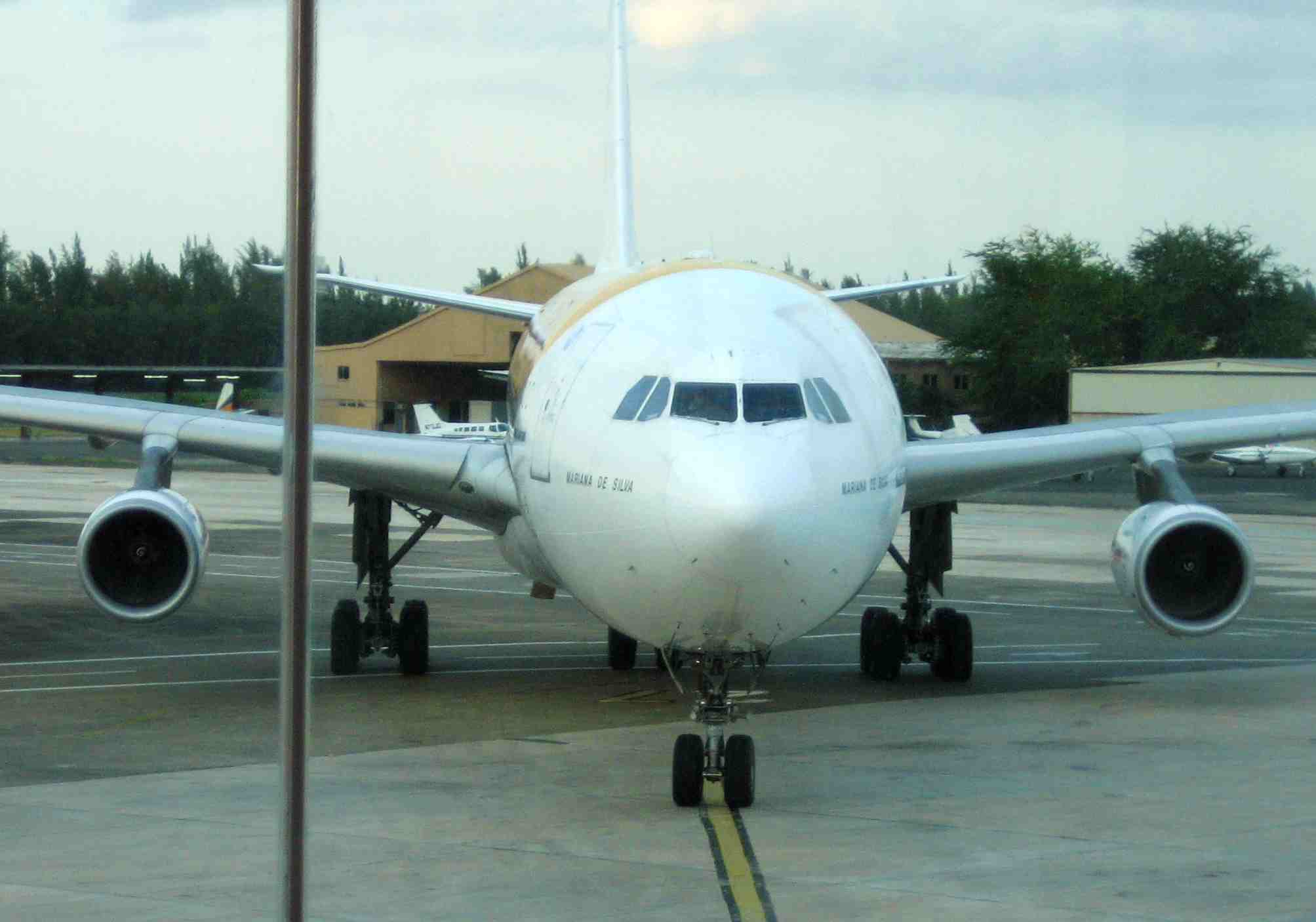 |
|
| The flights to Madrid were uneventful, and arrived early, so I had three
hours to kill. In this period, I learned that a French ATC strike had
canceled many of the flights to France, and might last four days.
Unfortunately, the airline only canceled my flight at its scheduled
departure time,
so I had to wait three hours to reschedule. Thanks
to my friend, Steve B, of Champaign, Illinois, with whom I'd discussed
various backup plans, I was ready to ask the airline to fly me to
Barcelona, which they did. Arriving in Barcelona in the late afternoon, with the carousel holding no baggage for me and several other passengers, someone sent me outside security to another carousel that proved to be inside security. Sweet-talking myself through the security exit in the wrong direction, I was directed to the carousel at which I'd first waited. Eventually I found my bag on a carousel displaying no flight number at all. Relieved to have it, but stressed out with it all, I now had a mad-dash taxi ride to Sants station in downtown Barcelona, where I just made the Targo train up the coast. At the French border, things were delayed a half-hour while the Spanish and French crews reconfigured some equipment, and then chatted a bit, so it was a five hour journey to my stopping point of Béziers. Here, Hobson crashed as never before, in Hotel le Terminus (there are so-named hotels throughout France, and mostly within yards of the train station). At that hour, they were rolling up the town. Unhappily, I had paid for a hotel in Montpellier (my intended arrival point in France). Next day, I took a train from Béziers to my real start point of Agde. There, I went in search of the post office, and picked up a phone card which I had arranged to be mailed to me at this, my French address of Poste Restante, 34300 Agde. Unsurprisingly for France, the post office was closed for a long lunch, but surprisingly, my phone card was there when it opened. Unfortunately, I had difficulty getting it operating even in my GSM triband, not-under-contract, unlocked cellphone - which I'd used previously. Eventually I got it going in a back-up cellphone but now had spent the entire opening balance so could not make a call. Trying to top-up my balance, I learned that the phone company will do that just once a month (and for very few minutes) until I'd verified my address. Now how does one verify that you live at "Poste Restante, 34300 Agde"? Even the panhandler outside the post office would have a problem with that, and he seems to live there. So I went online and changed my address to my American one, only to learn that you can't change your country in their records without further formalities. So now I live in "Tampa, USA, France" which has disturbing political connotations quite likely to get me indicted in both countries for treason. Nothing comes easy. In a foreign land, with poor French, it's even harder. When I get tired, my poor French devolves to very-poor French. I left the phone problem to another day. I spent the night at Agde, but slept poorly. I had at least arrived. |
|
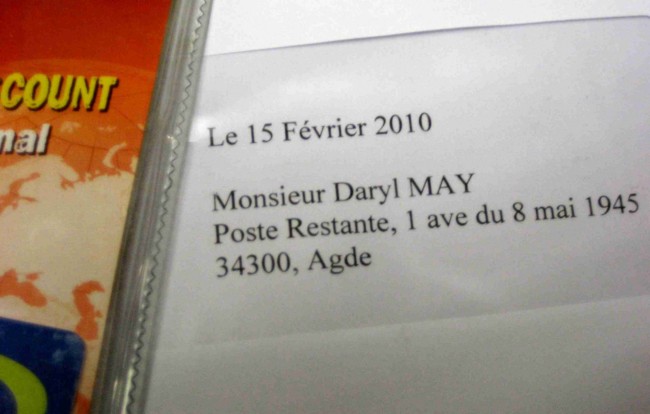 |
|
| < Previous © 2010 Daryl May Next > | |